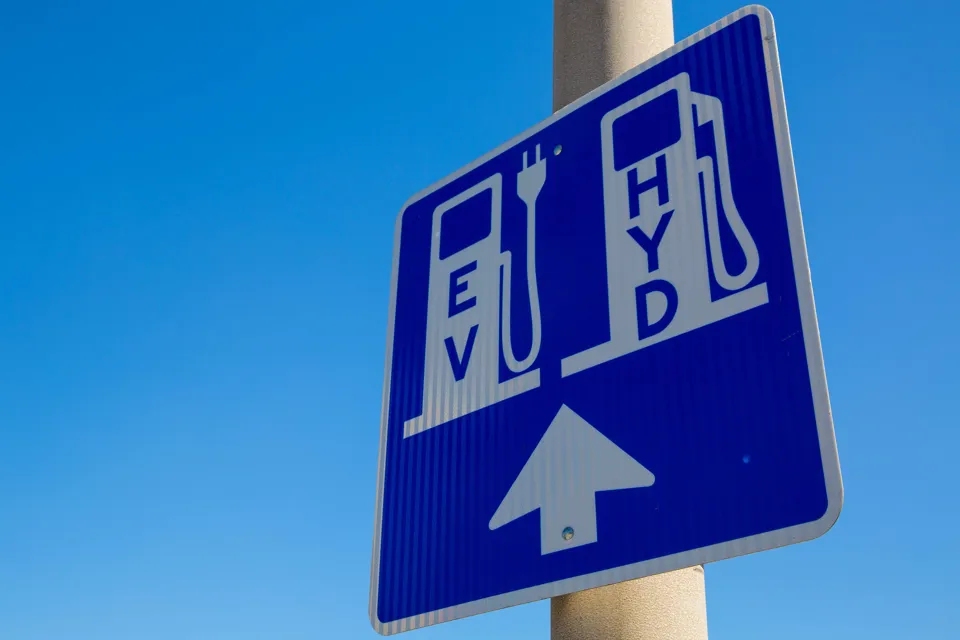In the zero emission motoring landscape, hydrogen fuel cell electric vehicles (FCEVs) have been left trailing in the wake of battery electric vehicles (BEVs).
Almost all major car manufacturers are clamouring to launch BEVs, as the expanding public charging infrastructure makes operating them more practical and falling battery costs makes them financially attractive.
However, hydrogen does have plenty of potential as a vehicle fuel.
For example, it takes about five minutes to refuel a FCEV with enough hydrogen to provide a range of 300 miles, while a BEV (40kWh battery) using a 7kW charging point takes around six hours to fully charge for a range of 140 miles.
The Government’s Road to Zero strategy notes that these advantages are being eroded by the development of longer range BEVs and greater deployment of higher speed recharging, while hydrogen as a fuel remains more expensive than electricity for the consumer.
“In the long term, hydrogen vehicle technologies may well be suited to use in HGVs and by fleets where range and fast fuelling are key concerns,” adds the strategy.
Nevertheless, several car manufacturers are investing huge amounts into FCEV technology.
Hyundai, Honda and Toyota have all launched production FCEVs, while Audi has recently agreed a cross-licencing partnership with Hyundai which gives the German manufacturer access to the South Korean company’s fuel cell components and supply chain.
“At first glance that may be a strange move, to give away decades of costly, cutting-edge research and development,” says Ashley Andrew, managing director of Hyundai Motor UK.
“But in the early days of petrol cars you had to find a pharmacy to sell you some petrol until there was enough demand that people realised there was a business in selling fuel.
“So the more hydrogen cars that are being built, the quicker the infrastructure will develop.”
At present, there are just 10 hydrogen fuelling stations available for public use in the UK – in Sheffield, Teddington, Rainham (Essex), Cobham, Heathrow, Hendon, Swindon, Port Talbot, Gatwick and Beaconsfield with two additional mobile refuelling stations in south England – and providers have announced plans for at least four more.
Critics of FCEVs point to the processes needed to create hydrogen fuel and transport it, saying this makes them less ‘green’ than BEVs.
However, research by the Fraunhofer Institute for Solar Energy (ISE), commissioned by hydrogen infrastructure organisation H2 Mobility Deutschland, has found in certain circumstances FCEVs are more environmentally friendly than BEVs. The study looked at greenhouse gas emissions in the manufacture, operation and disposal of battery and fuel cell vehicles with ranges of 300km (188 miles) and more for the periods 2020-2030 and 2030-2040.
It compared the best and worst scenarios for the generation of electricity or hydrogen.
The best case scenario saw the BEV charged with electricity generated through solar power and the FCEV through hydrogen created through electrolysis using wind power, while the worst case saw the BEV charged using the a mix of energy generations (50% natural gas and 50% wind power) and the hydrogen created through a process called steam methane reformation, which separates hydrogen from natural gas.
In both scenarios, the research found that for cars with ranges higher than 250 kilometres (156 miles), FCEVs are more climate friendly than BEVs, due mostly to the greenhouse gas emissions that come from battery production.
“For high ranges, fuel cell vehicles are more climate friendly and for short distances battery-powered vehicles are,” says Christopher Hebling, head of hydrogen technologies at Fraunhofer ISE.
A further string to hydrogen’s environmental bow is that production of the fuel has the potential to reduce the amount of waste plastic in the environment: another topical pollution issue.
Two UK universities – Swansea University and the University of Chester – have developed processes to convert plastic into hydrogen.
Swansea’s method sees light-absorbing material added to the plastic, before it is placed in an alkaline solution and then exposed to sunlight, which creates hydrogen.
“There’s a lot of plastic used every year – billions of tonnes – and only a fraction of it is being recycled,” says Moritz Kuehnel, a lecturer in inorganic chemistry at Swansea University.
“We are trying to find a use for what is not being recycled,” he adds.
Most plastic bottles are made from polyethylene terephthalate (PET) which can be recycled, but often end up being burned or thrown into landfill.
“Even if you do recycle it, it needs to be pure – so only PET, nothing else mixed with it, and it has to be clean, no grease, no oil,” says Kuehnel. “Potentially you need to wash it which is expensive, and even if you do all of that, the plastic you get isn’t always as nice as virgin material.”
He adds: “The beauty of this process is that it’s not very picky. It can degrade all sorts of waste. Even if there is a bit of food or grease from a margarine tub, it doesn’t stop the reaction, it makes it better.”
However, rolling out the project on an industrial level may still be years away, warns Kuehnel.
The other UK project to convert waste plastic into hydrogen for transport fuel is closer to reality.
Peel Environmental last month (August) signed a collaboration agreement with Waste2Tricity and Powerhouse Energy which will see 11 waste plastic-to-hydrogen facilities developed across the UK as part of a £130 million investment.
The partnership has since put in a planning application for the first facility at Peel’s Protos site near Ellesmere Port in Cheshire.
This will use a process devised by researchers at the University of Chester and involves a glass kiln being heated to 1,000C to instantly break down unrecyclable plastic, releasing a mixture of gases, one of them being hydrogen.
The process takes all mixed waste plastic in an untreated, unsorted, contaminated form and requires no sorting or washing.
“The technology converts all plastic waste into high quality, low carbon hydrogen syngas which can then be used to power gas engines,” says Joe Howe, executive director of the Thornton Energy Research Institute at the University of Chester.
“A by-product of this process is electricity, meaning waste plastic can not only fuel cars, but can also keep the lights on at home.
“Surely the world must wake up to this technology. It will make waste plastic valuable with it being able to power the world’s towns and cities and most importantly it can help clean up our oceans of waste plastic now.”























Login to comment
Comments
No comments have been made yet.